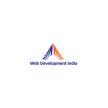Advanced Strategies in Modern Website Development
Best Website Development Company in India

Website development has evolved significantly over the past decade, integrating advanced technologies, innovative frameworks, and complex methodologies to create dynamic, user-centric, and high-performing websites. In this blog, we will explore various advanced strategies and best practices that are crucial for modern website design company in india This discussion will focus on architecture, performance optimization, security, user experience, and SEO.
1. Modern Web Architecture
1.1 Microservices Architecture
Microservices architecture breaks down a monolithic application into smaller, loosely coupled services. Each service can be developed, deployed, and scaled independently, enhancing flexibility and agility. This approach supports continuous delivery and DevOps practices, allowing teams to deploy features and updates rapidly.
1.2 Serverless Architecture
Serverless computing abstracts the infrastructure management, enabling website development india to focus solely on the application code. This model automatically scales with the application's demand and eliminates the need for server provisioning, patching, and maintenance. Services like AWS Lambda, Azure Functions, and Google Cloud Functions exemplify serverless architecture.
1.3 Jamstack
Jamstack (JavaScript, APIs, and Markup) is a modern web development architecture that decouples the front end from the back end, using static site generators, headless CMS, and APIs. This architecture improves performance, enhances security, and simplifies scaling.
2. Performance Optimization
2.1 Lazy Loading
Lazy loading delays the loading of non-critical resources at the initial page load, improving performance and reducing initial load time. Images, videos, and iframes are common candidates for lazy loading.
2.2 Content Delivery Networks (CDNs)
CDNs distribute content across multiple servers globally, reducing latency and improving load times for users regardless of their geographic location. Leveraging CDNs ensures faster content delivery and better user experience.
2.3 Caching Strategies
Implementing efficient caching strategies, such as browser caching, server-side caching, and edge caching, significantly enhances website performance. Caching reduces the need for repeated data retrieval from the server, thereby decreasing load times.
2.4 Minification and Compression
Minification removes unnecessary characters from code (such as whitespaces, comments, and newlines) without affecting its functionality. Compression techniques, like Gzip or Brotli, reduce the size of HTML, CSS, and JavaScript files, facilitating faster data transfer between the server and the client.
3. Security Measures
3.1 HTTPS and SSL/TLS
Securing websites with HTTPS and SSL/TLS certificates encrypts the data transferred between the server and the client, protecting it from interception and tampering. Modern browsers also flag non-HTTPS sites as insecure, affecting user trust and SEO rankings.
3.2 Content Security Policy (CSP)
CSP is a security standard that helps prevent cross-site scripting (XSS), clickjacking, and other code injection attacks. By specifying allowed content sources, CSP reduces the risk of malicious code execution.
3.3 Authentication and Authorization
Implementing robust authentication and authorization mechanisms ensures that only authorized users can access sensitive data and functionalities. Multi-factor authentication (MFA), OAuth, and JWT are commonly used techniques to enhance security.
3.4 Regular Security Audits
Conducting regular security audits and vulnerability assessments helps identify and mitigate potential threats. Tools like OWASP ZAP and Burp Suite are widely used for automated security testing.
4. User Experience (UX)
4.1 Responsive Design
Responsive design ensures that a website adapts seamlessly to various screen sizes and devices, providing an optimal viewing experience. Using flexible grids, fluid images, and media queries, responsive design enhances accessibility and usability.
4.2 Progressive Web Apps (PWAs)
PWAs offer a native app-like experience on the web, with features like offline access, push notifications, and home screen installation. They combine the best of web and mobile apps, providing fast, reliable, and engaging user experiences.
4.3 Accessibility
Ensuring web accessibility involves designing and developing websites that are usable by people with disabilities. Implementing ARIA (Accessible Rich Internet Applications) attributes, providing keyboard navigation, and adhering to WCAG (Web Content Accessibility Guidelines) standards are essential practices for creating inclusive websites.
4.4 User-Centric Design
User-centric design focuses on understanding the needs, preferences, and behaviors of users. Conducting user research, creating personas, and performing usability testing help in designing intuitive and effective user interfaces.
5. Search Engine Optimization (SEO)
5.1 Technical SEO
Technical SEO involves optimizing the technical aspects of a website to improve its visibility and ranking in search engine results. Key elements include:
XML Sitemaps: Providing a roadmap for search engines to crawl and index the website efficiently.
Robots.txt: Controlling search engine crawling and indexing behavior.
Canonical Tags: Preventing duplicate content issues by specifying the preferred version of a webpage.
5.2 Schema Markup
Schema markup, or structured data, enhances search engine understanding of website content. By using JSON-LD, Microdata, or RDFa, developers can provide additional context to search engines, enabling rich snippets and improving click-through rates.
5.3 Page Speed
Page speed is a critical factor in SEO, as faster websites tend to rank higher in search results. Optimizing images, leveraging browser caching, and minimizing server response time contribute to improved page speed.
5.4 Mobile-First Indexing
With the majority of web traffic coming from mobile devices, search engines prioritize mobile-friendly websites. Ensuring a responsive design, fast mobile load times, and a seamless mobile user experience are vital for mobile-first indexing.
6. Content Management Systems (CMS)
6.1 Headless CMS
Headless CMS decouples the content management backend from the frontend presentation layer. This approach provides greater flexibility, allowing content to be delivered via APIs to various platforms, including websites, mobile apps, and IoT devices.
6.2 Decoupled CMS
Decoupled CMS combines the advantages of traditional and headless CMS. It allows for a separate front end while still providing a built-in presentation layer. This hybrid approach offers flexibility in front-end technology choices and ease of use in content management.
6.3 Content Personalization
Content personalization involves delivering tailored content to users based on their preferences, behavior, and demographics. Utilizing AI and machine learning algorithms, developers can create dynamic, personalized experiences that increase engagement and conversion rates.
7. Scalability and Maintenance
7.1 Horizontal and Vertical Scaling
Horizontal scaling involves adding more servers to handle increased traffic, while vertical scaling upgrades the existing server's capacity. Both strategies are essential for maintaining performance and availability during traffic spikes and growth phases.
7.2 Automated Testing
Automated testing ensures the reliability and stability of a website by continuously checking for errors and bugs. Unit tests, integration tests, and end-to-end tests help in identifying issues early in the development process, reducing downtime and improving user experience.
7.3 Continuous Integration and Continuous Deployment (CI/CD)
CI/CD practices automate the process of integrating code changes, running tests, and deploying updates. This approach enables faster development cycles, reduces the risk of errors, and ensures that new features and bug fixes are deployed swiftly and safely.
7.4 Monitoring and Analytics
Monitoring tools track website performance, user behavior, and potential issues in real-time. Analytics platforms provide insights into user interactions, helping developers make data-driven decisions to improve the website. Tools like Google Analytics, New Relic, and Splunk are commonly used for monitoring and analytics.
8. Future Trends in Web Development
8.1 Artificial Intelligence and Machine Learning
AI and machine learning are transforming web development by enabling intelligent features like chatbots, recommendation systems, and predictive analytics. These technologies enhance user experience and provide valuable insights for continuous improvement.
8.2 WebAssembly
WebAssembly (Wasm) is a binary instruction format that allows high-performance applications to run on web browsers. It enables developers to use languages like C, C++, and Rust for web development, opening up new possibilities for complex, compute-intensive applications.
8.3 Augmented Reality (AR) and Virtual Reality (VR)
AR and VR are revolutionizing the way users interact with websites by providing immersive experiences. E-commerce, education, and real estate are some sectors where AR and VR are making significant impacts, enhancing user engagement and satisfaction.
8.4 Blockchain Technology
Blockchain technology is being integrated into web development to enhance security, transparency, and trust. Decentralized applications (dApps) leverage blockchain for secure transactions, data integrity, and user privacy, offering innovative solutions across various industries.
Conclusion
Modern website development is a multifaceted discipline that requires a deep understanding of various technologies, methodologies, and best practices. By leveraging advanced architectures like microservices and serverless, optimizing performance through lazy loading and CDNs, ensuring security with HTTPS and CSP, enhancing UX with responsive design and PWAs, and improving SEO with technical optimization and structured data, developers can create robust, high-performing websites that meet the demands of today’s users. Staying abreast of future trends like AI, WebAssembly, AR/VR, and blockchain will further ensure that websites remain cutting-edge and competitive.
About the Creator
webdevelopmentindia
webdevelopmentindia is an award-winning website development company in india and, as the best PHP development company in india, we've helped a lot of small businesses in india and around the world.
Enjoyed the story? Support the Creator.
Subscribe for free to receive all their stories in your feed. You could also pledge your support or give them a one-off tip, letting them know you appreciate their work.






Comments
There are no comments for this story
Be the first to respond and start the conversation.